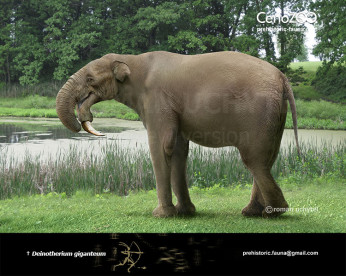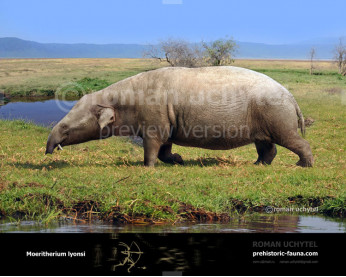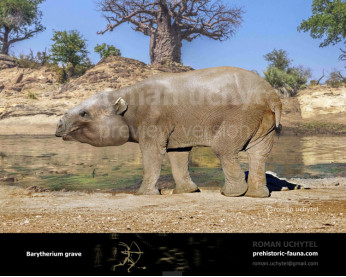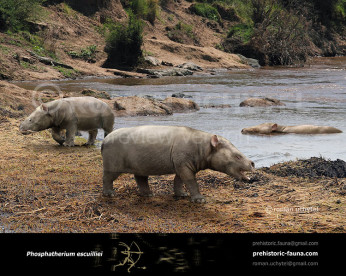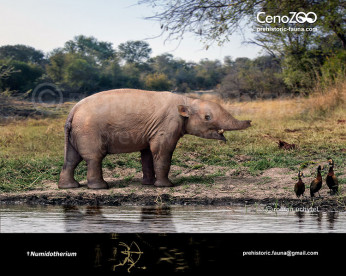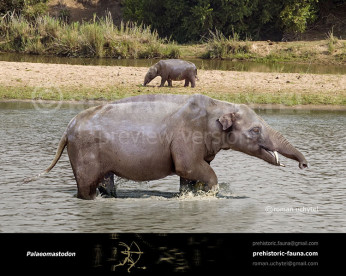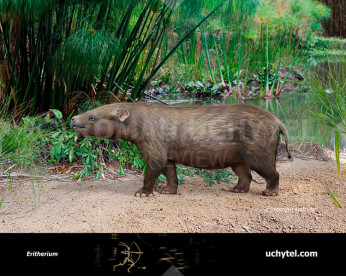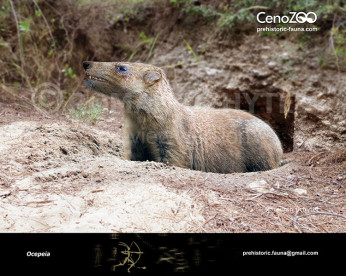Prodeinotherium (Dеinotherium) bavaricum
4343Prodеinotherium (Prodeinotherium Ehik, 1930)
Dеinotherium bavaricum
Order: Proboscidea
Family: Deinotheriidae
Dimensions: length - 4 m, height - 2,4 m, weight - 3000 kg
Temporal range: Africa, Europe, and Asia in the early and middle Oligocene - middle Miocene.
A typical representative: Prodеinotherium bavaricum (von Meyer, 1831) Ehik, 1930
Prodeinotherium is an early representative of the family Deinotheriidae, that lived in Africa, Europe and Asia in the early and middle Miocene. It was the size of a small elephant, about 2,7m at the shoulders, but differed from elephants in possessing a pair of downward curving tusks on the lower jaw. In appearance and many characters it was like Deinotherium (with which it is placed in the subfamily, Deinotheriinae (Sanders et al. 2004), but differed in being of smaller size, having shorter forelimbs, and also in various details in the shape and form of the teeth.
The earliest species to appear is Prodeinotherium hobleyi, known from the Early Miocene of Kenya and Uganda (about 18 to 20 million years old). A molar of a small prodeinothere from Eritrea may also belong to this species and be of the same age. Prodeinotherium was larger and more specialised than its Oligocene predecessor Chilgatherium. It flourished for several millions of years, before being suddenly replaced in the middle Miocene by the much larger Deinotherium.
Prodеinotherium (Prodeinotherium Ehik, 1930)
Dеinotherium bavaricum
Order: Proboscidea
Family: Deinotheriidae
Dimensions: length - 4 m, height - 2,4 m, weight - 3000 kg
Temporal range: Africa, Europe, and Asia in the early and middle Oligocene - middle Miocene.
A typical representative: Prodеinotherium bavaricum (von Meyer, 1831) Ehik, 1930
Prodeinotherium is an early representative of the family Deinotheriidae, that lived in Africa, Europe and Asia in the early and middle Miocene. It was the size of a small elephant, about 2,7m at the shoulders, but differed from elephants in possessing a pair of downward curving tusks on the lower jaw. In appearance and many characters it was like Deinotherium (with which it is placed in the subfamily, Deinotheriinae (Sanders et al. 2004), but differed in being of smaller size, having shorter forelimbs, and also in various details in the shape and form of the teeth.
The earliest species to appear is Prodeinotherium hobleyi, known from the Early Miocene of Kenya and Uganda (about 18 to 20 million years old). A molar of a small prodeinothere from Eritrea may also belong to this species and be of the same age. Prodeinotherium was larger and more specialised than its Oligocene predecessor Chilgatherium. It flourished for several millions of years, before being suddenly replaced in the middle Miocene by the much larger Deinotherium.

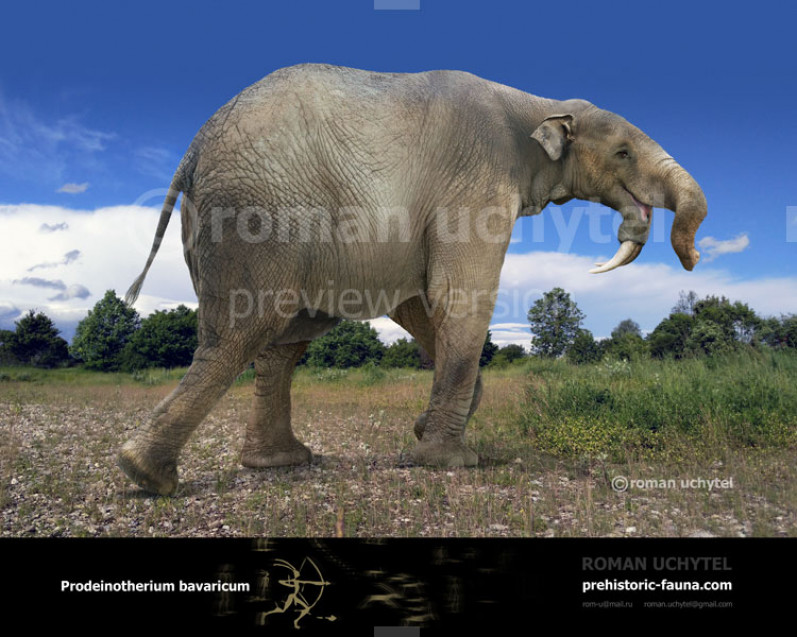
-797x638.jpg)

-70x56.jpg)
